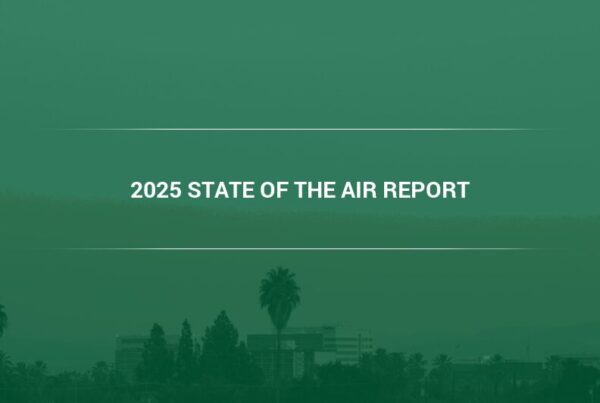Recent research has implicated a connection between certain air pollutants and the development of autism. The studies on air pollutants linked with autism found that exposure to high levels of particulate pollution in utero have a likely link with the development of autism later in life. What is the mechanism that links particulate pollution with autism, and how can these air pollutants be combated to reduce autism rates?
Air Pollutants that Can Cause Autism
Studies were done on the air pollutants that can cause autism have identified fine particle pollution as one of the possible causes of autism.
“Fine particulate pollution refers to the emission of tiny particles, smaller than 1 µm in size, or 100 times smaller than the width of a human hair,” explains Camfil USA’s Charlie Seyffer, Manager of Marketing & Technical Materials and 37-year ASHRAE member and active committee participant. “These particles are so tiny that they can easily penetrate the lungs and bloodstream of a person, and even work their way through the bloodstream up to the brain.” (1)
In healthy adults, exposure to fine particle pollution is linked with a number of cardiovascular ailments and cancer. The EPA warns that constant exposure to tiny particles can lead to heart attacks, aggravated asthma, difficulty breathing, overall lung function difficulties, heightened risk of lung cancer, and even premature death in those with pre-existing heart or lung conditions.
The dangers of particle pollution become more extreme when particularly vulnerable groups like the elderly, young children and pregnant women are exposed to particulate pollution. Because the bodies of young children are still developing, particle pollution can be especially dangerous to them.
The same goes for pregnant women, as particle pollution can damage the health of a fetus, and some studies have linked fine particulate pollution to increased risk of preterm births. To make matters worse, recent studies have found that a pregnant woman’s exposure to fine particulate matter could increase their baby’s chance of developing autism.
Studies on The Link Between Air Pollution and Autism
A nationwide study released in 2015 found that children of women who were exposed to abnormally high levels of particulate air pollution during their pregnancy have approximately double the risk of developing autism.
The study found that the risk was the greatest when the exposure occurred in the third trimester, and the researchers saw no significant increase in the risk of developing autism if the exposure occurred either after birth or before conception. Rates of autism were found to increase proportionally with exposure levels across the entire range of subjects studied. The long-term study began in 1989 and it examined the offspring of approximately 116,000 women nurses in the United States.
“The new study supports previous research which also found possible connections between autism and air pollution, including a 2010 study which reported that a child’s risk of developing autism doubled if the mother lived near a freeway during her third trimester. Proximity to a freeway can stand in for an individual’s exposure to fine particulate pollutants.” (2)
Little to no connection was found with larger sized particles and the development of autism – the particles between 2.5 and 10 microns..
The 2015 study was the first study to examine the link between autism and air pollution across the entire United States. It is known that the autism disorder has a strong genetic basis, but scientists are increasingly motivated to study potential environmental causes.
“The members of the research team were careful to stress that the findings of their study do not definitively prove that air pollution causes autism,” says Seyffer at Camfil. “They only reflect a mathematical association between air pollution and increased autism risk. The researchers say that more research on the topic will have to be done, though the current evidence is compelling enough to suggest we should be proactive about reducing levels of air pollutants.” (3)
Reducing Air Pollutants Linked with Autism
Reducing air pollutants linked with autism can be accomplished by combining various methods of pollution control. Pollution control tactics include regulation, technological fixes, and lifestyle changes.
Regulations that impose emissions limits have proven effective at reducing levels of air pollution. The Clean Air Act is expected to save around 230,000 lives annually by 2020 as a result of its successful limiting of emissions. The EPA recently tightened emissions on smog-causing ozone, and states will have until 2020 to comply. Similar tightening of air pollution limits should be applied to particulate matter pollution.
The development of new technologies to reduce particulate matter pollution should help support regulations. Improved emission control devices on automobiles or the use of fully electric vehicles can substantially reduce air pollution. More efficient scrubbers should be installed in factories, and capture devices can be developed for restaurants that charbroil food.
“Lifestyle changes will have to be made as a society if air pollution is to be reduced,” says Seyffer. “People can switch to public transportation instead of using personal vehicles, or walk or bike to work or school if distances are short. People can use more energy efficient appliances, and burn cleaner fuels like gas instead of wood.” (4)
Research on air pollutants linked with autism is still ongoing, but there is plenty of evidence out there that air pollution can harm people in other ways. Air pollution causes so many different health problems that it is critical to focus on eliminating it whenever and wherever possible.
Camfil can provide you with air filters to protect yourself and your family from the air pollutants linked with autism. Contact Camfil USA today because air pollution doesn’t just increase autism risk, it can harm you in many different ways.
SOURCES
- https://www.autismspeaks.org/science/science-news/largest-ever-study-autism-pollution-shows-strong-link-during-pregnancy
- https://www.scientificamerican.com/article/autism-risk-linked-to-particulate-air-pollution/
- https://www.hsph.harvard.edu/news/press-releases/fine-particulate-air-pollution-linked-with-increased-autism-risk/
- https://www3.epa.gov/region1/airquality/reducepollution.html



